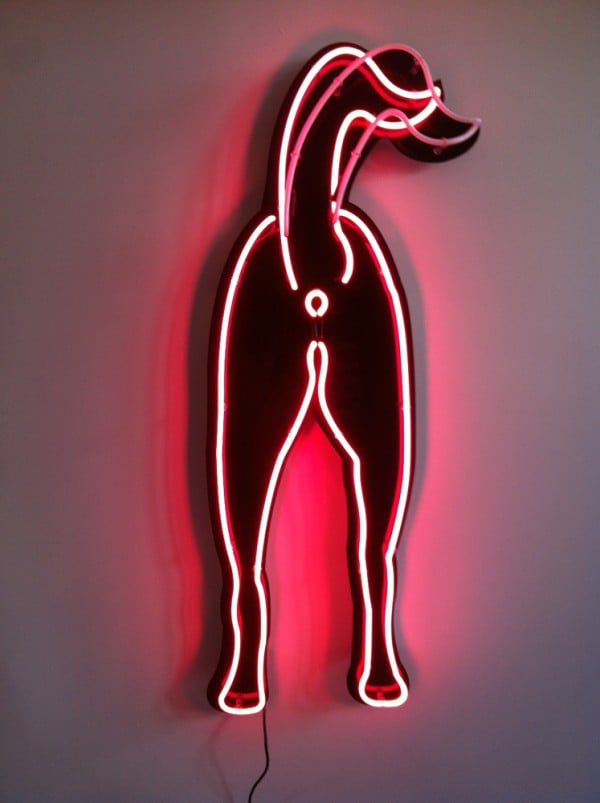Galleries
We Love Collecting…Neon


Astrid T. Hill

Neon has been heating up the art world for quite some time, but there seems to be renewed intensity in recent months. Most notably this was evident in Miami, where a major show of Tracey Emin’s neon sign sculptures opened at the Museum of Contemporary Art (MOCA), North Miami, in December, just as Art Basel in Miami Beach began.
The show, “Angel Without You,” (which runs through March 9), marks the first American museum exhibition dedicated to the acclaimed British artist, famous for her blunt, confessional style. Viewers were surrounded by Emin’s sloganeering and diaristic phrases in her own handwriting: “Trust Yourself,” “Never Again!,” “I know.”
Meanwhile, Pace Gallery in New York just closed a show of work by Keith Sonnier, in which the artist put a minimalist twist on his hanging neon forms while continuing to highlight the paradox inherent to the medium, namely, the public display of the personal.
Taking a step back in art history, starting in the 1960s, Bruce Nauman turned out a number of pieces that fell under the heading of “neons” that were exercises in linguistic play—illuminated puns and palindromes, rebuses and rhymes. Beneath the bright absurdist surface there were thinly disguised political statements and wry commentary about the role of the artist. Earlier works merely hinted at serious intent, while later pieces, which included both figurative and linguistic elements, often quite literally spelled out, themes of love, sex, death, cruelty, humor, torture, racism, and even war. The gaudy, commercial medium of neon produced a kind of bleak counterpoint that might be called irony, but was scarcely playful.
The cultural meaning of neon has changed since Nauman’s time, but the medium, in the hands of contemporary artists, sets much the same dynamic in motion, a dialogue between commercial surface and serious intent, with the stress tending to fall on one side or the other. Emin’s work, in my opinion, is the epitome of that, which is what makes it valuable and interesting. Of course, if such beacons of the contemporary art world are outside your budget, consider the title, the choice of image, the almost classical line of Desi Santiago’s, Gypsy, not to mention the garish, glowing color and the history behind the medium. It fluctuates between public and private, old and new, facetious cartoon and elegant archetype. Think of it as one and it becomes the other, definitely following in the footsteps of his peers. Or, just admire the glowing butt and wagging tail. Desi Santiago’s Gypsy is a work we love collecting.
Astrid T. Hill is the president of Monticule Art, which provides art advisory services to private collectors. She specializes in contemporary primary and secondary market works of art.